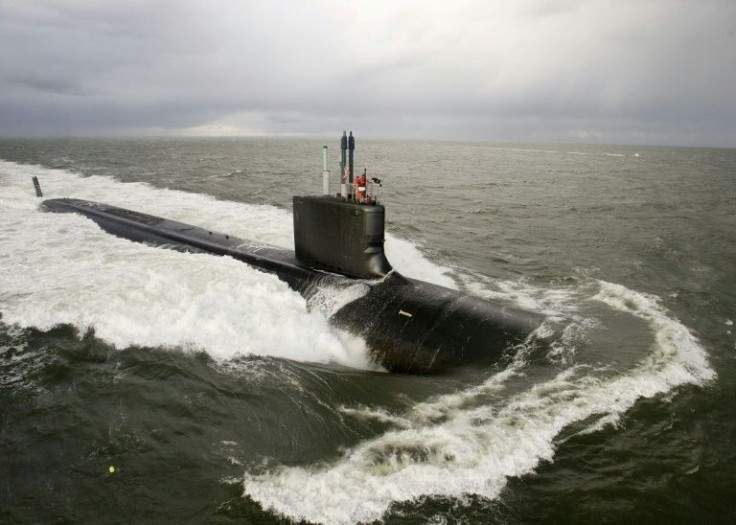The Davidson Window: US Navy Sailing Through Nightmarish Period As China Eyes Taiwan
KEY POINTS
- Decisions to build or procure new ships now will only have a small impact during the so-called 'Davidson Window'
- While the U.S. Navy struggles with the maintenance of its aging fleet, China has seen rapid expansion of its navy
- A Pentagon report projected that China's Naval fleet was expected to grow to 420 ships by 2025 and 460 ships by 2030
As the Davidson Window or the "decade of concern" — for a potential forced unification of Taiwan with mainland China — opens up, the massive advancement and expansion of the Chinese PLA Navy are coinciding with the steady shrinking and decline of U.S. Navy's capabilities that are marred by deployment delays, cost overruns and severe maintenance issues.
A report released by the non-partisan Congressional Research Service (CRS), the policy research arm of the U.S. Congress, warns that any decision made by Washington to build or procure new ships now will only have a small impact during the so-called Davidson Window.
The CRS report highlights the concerns raised by some Congressional Members and observers about the risk that China might attack Taiwan sometime between 2021 and 2027 — a theoretical timeframe often referred to as a Davidson Window named after retired Admiral Philip Davidson, or even between 2020 and 2030 — a timeframe called the "decade of concern."
In response to the Senate Armed Services Committee considering his nomination as Commander, U.S. Pacific Command (PACOM) in April 2018, Admiral Philip Davidson warned saying: "China is now capable of controlling the South China Sea in all scenarios short of war with the United States."
Even though the overall capabilities of the U.S. Navy are greater than the Chinese PLA Navy, Beijing's unprecedented effort to achieve naval modernization in the past three decades has led to a decline in the U.S. advantage. The report says that if the current trend continues, China is expected to either draw even or may be able to surpass the U.S. naval capabilities.
Highlighting the fact that the U.S. Navy may be losing its strategic advantage soon enough, the CRS report points out, given that it takes several years to build and deploy new ships, any decision made by Washington even now on procuring new ships will have an impact on the navy's capabilities only after the Davidson Window or the "decade of concern" is over.
A report in the South China Morning Post based on a review of the US Navy's shipbuilding plans for the 2023 financial year said that with old vessels getting phased out and new deployments taking time, the navy's "battle force" ships will shrink from 292 in 2022 to 280 in 2027. During this time, the firepower of the U.S. Fleet, which includes the numbers of vertical launch missile cells on surface vessels and submarines, torpedoes and daily tactical aircraft sorties from carriers, would also decline by 13 percent over the next decade. This shrinkage will coincide with the rapid expansion of China's naval capabilities.
Even as the U.S. Navy struggles with the maintenance of its aging fleet, China on the other hand has seen a rapid expansion of its naval fleet. A 2021 Pentagon report projected that the Chinese Naval fleet was expected to grow to 420 ships by 2025 and 460 ships by 2030.
A recent report in USNI News said that while the Chinese fleet this year grew beyond 355 ships, the U.S. has a backlog of about 4,200 days of maintenance delays in the surface ship program – the equivalent of reducing the fleet by about 10 ships for a year.
Even as new ship procurement and deployments take time, the CRS report says that the U.S. must look at a range of other options to offset the Chinese challenge and bolster the Navy's capabilities during the Davidson Window.
The report suggests a range of options, from delaying the retirement of ships, rapid upgrades and speeding up maintenance backlogs, relocating forces from the Atlantic theater to the Pacific theater, and increasing surveillance and intelligence gathering.
A 2018 report said that to grow its fleet size to 355 ships, the Navy was considering extending the service life of its ships by at least seven years, and could stretch the life of some ships by 13 years.
Interestingly, the report also recommends an increase in the demonstration of operational capabilities and tactics of creating uncertainty or confusion in China about the U.S. Navy's capabilities.
Meanwhile, a counter-assessment offered in the CRS report argues that adequate weightage is often not given to the unique strengths that the U.S. holds particularly in areas of operation like undersea warfare; personnel quality, training, and initiative; operational experience and ability to conduct joint operations with other U.S. military services, allies and partners.
The potential support from allies and partners is a factor that has been highlighted even by Naval Chief, Admiral Michael Gilday, who in October termed relations with allies as "absolutely critical," calling them "an asymmetric advantage," which the Chinese and Russians "don't enjoy in the same numbers" as the U.S. does.

© Copyright IBTimes 2024. All rights reserved.






















